“Emma had always found the water to be soothing, but the thought of kayaking seemed daunting. She watched others glide effortlessly on the surface and longed to join in. Determined, she set out to learn, and, to her surprise, she quickly got the hang of the kayaking basics. It wasn’t just about paddling; it was about connecting with nature and enjoying the outdoors in the company of fellow kayakers. That first successful outing on the lake sparked a passion in Emma, leading her to explore the essentials of kayaking.
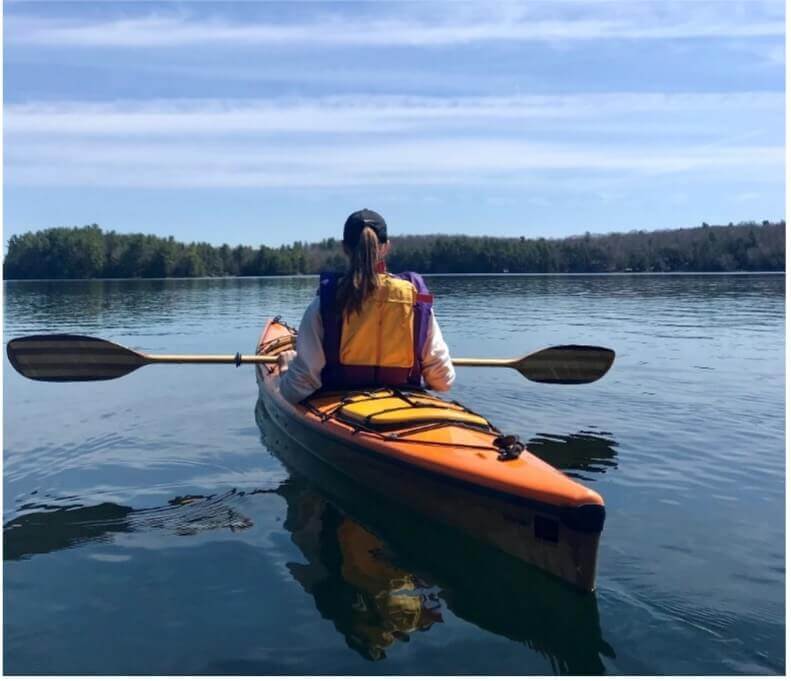
This transition from onlooker to active kayaker might seem swift, but it begins with gaining the right knowledge and understanding. Selecting the right type of kayak is crucial—whether it’s a stable recreational kayak for calm waters or a sleek touring model for longer journeys. Understanding the necessary gear, from life jackets to paddles, ensures safety and comfort. Moreover, kayaking does not have to be difficult, although it requires practice to master the strokes and maneuvers. One can avoid common beginner mistakes with proper technique and safety awareness.
Key Takeaways
- Proper preparation and choosing the right equipment are fundamental to kayaking.
- The basics of kayaking can be learned quickly with practice and dedication.
- Awareness of safety measures and common errors is essential for a good kayaking experience.
What’s the first thing I should know before hopping in a kayak?
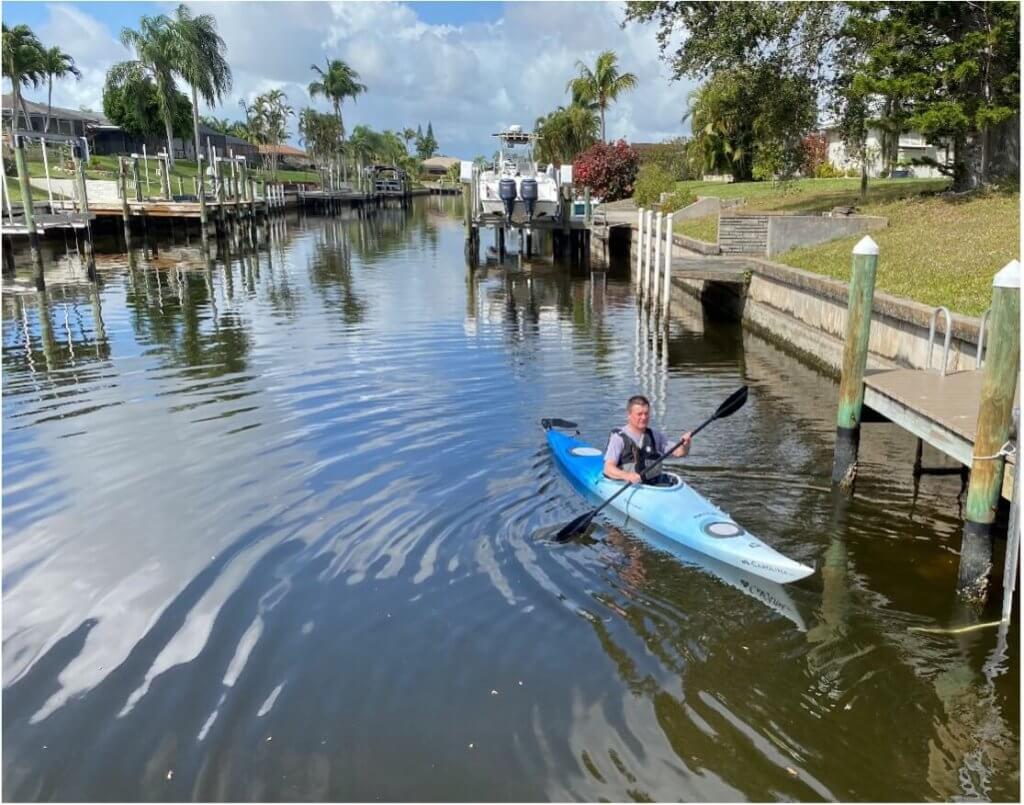
Before one gets into a kayak, they should be familiar with the basic safety procedures and gear, especially the personal flotation device (PFD). A PFD, commonly known as a life jacket, is crucial because it provides buoyancy in the water, which can be a lifesaver in case of a capsize.
For a PFD to function correctly, it is important to choose the right size and fit. A PFD should be snug but not too tight; one must be able to breathe and move comfortably.
Additionally, a new kayaker should understand the importance of choosing calm and sheltered waters for their first adventures. This minimizes the risks associated with strong winds, tides, and currents that can challenge a beginner’s control over the kayak.
Here’s a quick checklist for beginners:
- Safety Gear: Always have a whistle and a bilge pump or bailer on board.
- Proper Attire: Wear clothes that match the water temperature, not the air temperature. Use layers like wool, polyester, or nylon that will keep you warm even when wet. Avoid cotton as it does not keep you warm when it gets wet.
- Kayak and Paddle: Ensure the kayak is suitable for one’s skill level and the paddle is the right length. Kayaking instructor Bryan Hansel offers tips at PaddlingLight on how to find the right paddle length.
- Entry Technique: Learn and practice the proper technique to enter a kayak to prevent tipping over. Instructions from REI Expert Advice are particularly helpful. Alternatively, if you launch your kayak from your own dock, consider owning a kayak launch system.
- Basic Paddling Skills: Acquaint oneself with basic strokes before heading out, such as the forward and reverse paddles and the sweep stroke for turning the kayak.
In summary, personal safety and preparedness are paramount. One must ensure they have a suitable PFD, are dressed appropriately for the conditions, and are familiar with calm waterways along with basic kayaking techniques and entry methods.
Choosing the Right Kayak
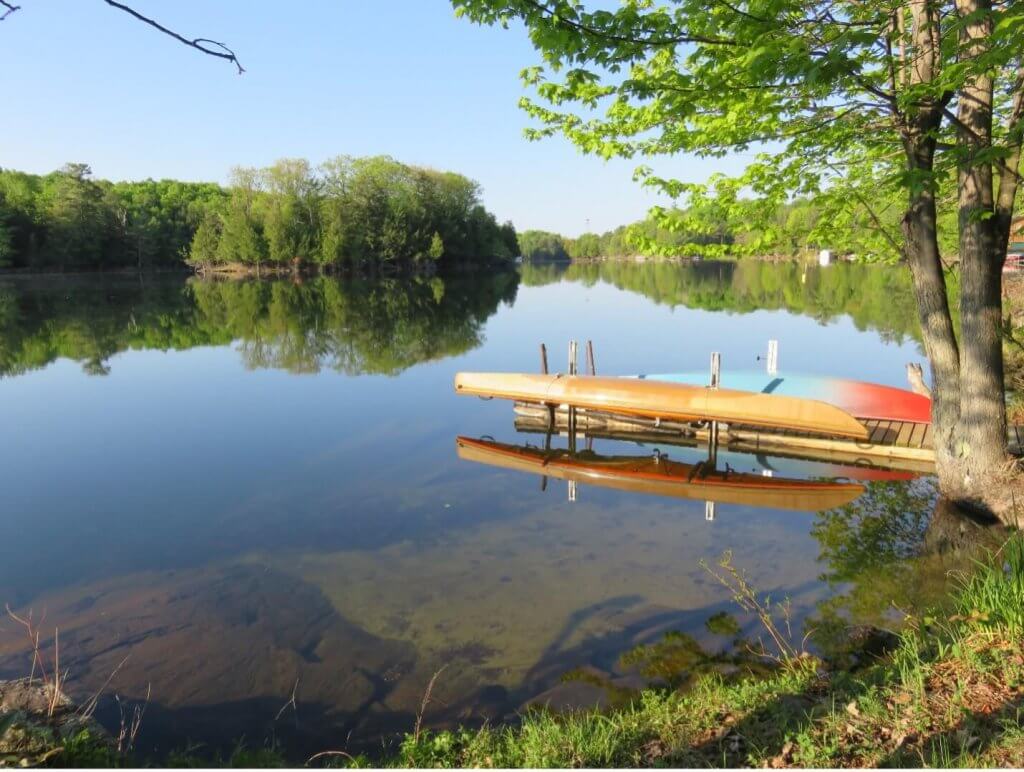
When one is starting their kayaking journey, selecting the appropriate kayak is key. They’ll encounter a variety of kayak types, each suited for different conditions and experiences.
Sit-on-top kayaks are quite user-friendly. They’re stable, easy to get in and out of, and are a solid choice for warm climates where a swim might be welcome. A sit-inside kayak offers more protection from the elements, making it better suited for cooler conditions or for paddlers looking for a dryer experience and offers less exposure to UV rays and harsh weather.
Fishing kayaks, often sit-on-top for their stability and on-board space, come with features like rod holders and are sometimes pedal-powered to free up the hands. In contrast, touring kayaks are built for distance and efficiency, suitable for longer expeditions.
| Kayak Type | Pros | Cons |
| Sit-on-top | Easy to enter/exit; self-draining | Can be heavier and slower |
| Sit-inside | Better for cold weather; faster | Harder to recover if flipped |
| Fishing kayak | Stable; offers extra storage; many are pedal powered allowing for hands-free paddling | Heavy and can be awkward to transport |
| Touring kayak | Sleek; covers distances efficiently; often have rudders to counteract prevailing winds or currents | Less stable and roomy than others |
If someone’s just exploring the waters and not ready to buy a kayak, options to rent or borrow a kayak are available, which could help them understand what they like before making a budget commitment. It’s essential to match the type of kayak with their intended activities, whether it’s casual paddling, fishing, or long expeditions. Test paddling different models can be incredibly useful in helping make a decision.
Essential Kayaking Gear
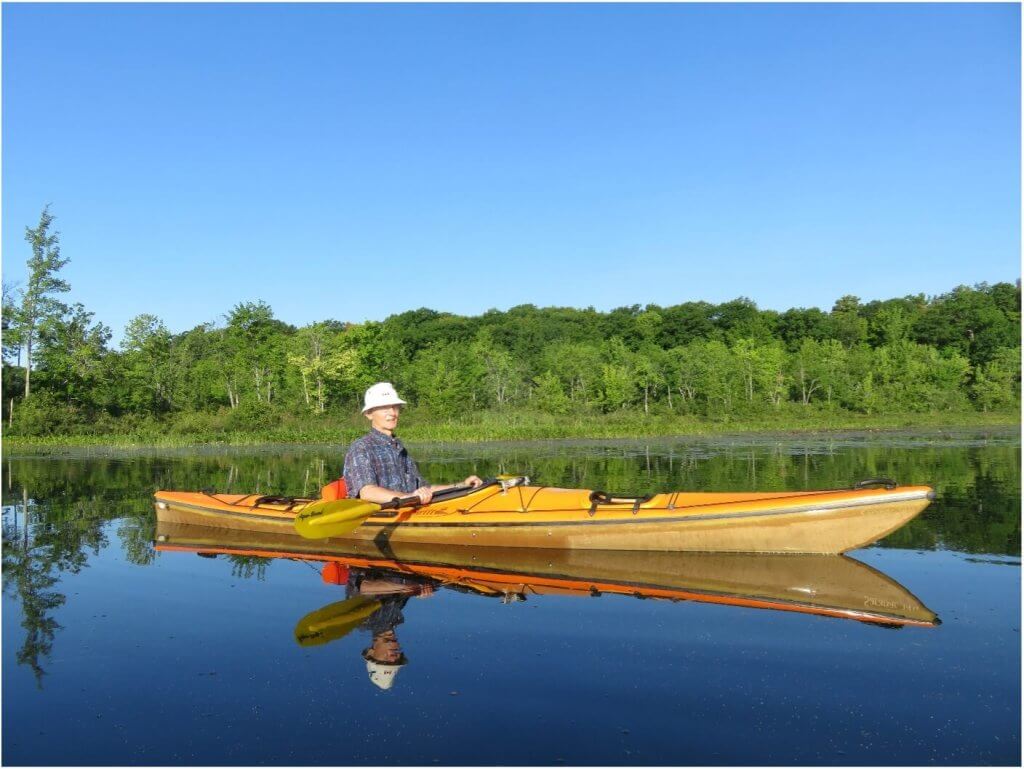
When hitting the water, one’s enjoyment and safety are greatly impacted by the gear they carry. Key items should always be on board for any kayaking trip, whether it’s a leisurely paddle in a calm lake or an adventurous journey through choppy rivers.
Kayak and Paddle: A kayak is incomplete without a reliable paddle. The paddle length is vital and should complement the paddler’s height and kayak width.
Personal Flotation Device (PFD): Safety comes first, and a well-fitting life jacket is non-negotiable. Ensure it’s Coast Guard-approved and comfortable for prolonged wear.
| Safety Gear | Purpose |
| Whistle | For signalling in case of an emergency |
| Paddle Float | To stabilize the kayak during re-entry |
| First-Aid Kit | For handling minor injuries on the spot |
Protection from Elements:
- Clothing: Appropriate attire can range from a wetsuit in colder conditions to quick-dry garments for sunnier days.
- Sunglasses and Sunscreen: To protect from sun glare and UV rays.
- Dry Bags: Keeps personal items and food.
Navigation: Always bring a map or GPS device, especially when exploring unfamiliar areas. A watch can also be critical for keeping track of time.
Remember, this list isn’t exhaustive, but it covers the essentials to make kayaking a safer and more enjoyable experience. Always review conditions and route specifics before selecting gear.
Is starting out in kayaking difficult?
Starting out in kayaking can seem daunting, but it’s really about taking the right steps. For those new to the sport, kayaking can be quite accessible. A person should first ensure they are comfortable with water and have a basic level of fitness. It’s not all about strength; balance and technique are key.
Beginners may find it reassuring that recreational kayaking on calm waters is relatively easy. It’s when kayakers progress to more challenging environments like whitewater or open sea that the difficulty increases significantly.
Here’s a simple breakdown for newcomers:
- Choose the right kayak: It’s suggested that beginners start with a stable and easy-to-navigate kayak, often referred to as “recreational kayaks.”
- Simple safety measures: Wearing a life jacket and knowing how to swim are fundamental safety skills.
- Getting started: Beginners may attend introductory courses to get familiar with paddling techniques, safety protocols, and navigating the waters. If you’ll be kayaking from your own dock consider investing in a kayak launch.
- For those wondering if they’ll capsize on their first outing, it’s rare if sticking to calm water and good weather. More information on beginner tips can be found at Kayak Activities For Beginners or for a comprehensive guide, visit Kayaks Point.
In essence, with the right approach, starting out in kayaking is manageable and can be a thoroughly enjoyable experience.
Kayaking Techniques
Mastering a few essential kayaking techniques is crucial for a safe and enjoyable experience on the water. Whether one is navigating through calm lakes or tackling rapid streams, understanding how to properly execute paddle strokes and capsize recovery methods can make all the difference.
Basic Paddle Strokes
The forward stroke is the most fundamental of all paddle strokes and is used to propel the kayak forward. This stroke should begin by reaching the blade of your paddle into the water alongside your kayak down at your feet and pulling until your paddle has reached your hips. Keep the blade vertical and immerse it fully near the feet to maximize power. Using torso rotation rather than just arm strength makes each stroke more efficient and less tiring.
For turning, the sweep stroke is key. By performing a wide, arcing stroke from the front of the kayak to the rear, you can steer the kayak to the opposite side of the paddle blade. This stroke involves pushing water to the side to create the necessary turning motion.
On the other hand, the reverse stroke helps in stopping the kayak or moving it backward. It’s essentially the forward stroke done in reverse. You start from the back of the kayak and pull the paddle blade forward along the side.
A demonstration of all three basic paddle strokes can be seen in this video by PaddleTV.
Capsize Recovery
A capsize in a kayak can happen, but with proper technique, recovery doesn’t have to be daunting. The T-rescue is an assisted rescue technique, where another kayaker comes to help by bringing their kayak perpendicular to the capsized kayak to stabilize it while the swimmer re-enters.
The roll is a more advanced recovery technique that involves righting oneself while still in the kayak. This move requires significant practice and uses a hip flick and a strong paddle stroke to snap the kayak upright from an upside-down position. Having a bombproof kayak roll is essential for white water kayaking but is not required for participating in recreational kayaking. Kayak roll clinics are often offered by kayaking clubs or whitewater training courses.
Understanding these techniques provides a solid foundation for enjoying kayaking safely and effectively. Practice is essential, and gradually, these skills will become second nature.
What are common rookie mistakes when learning to kayak?
When newcomers take to the water in a kayak, they often learn through trial and error, which can lead to some predictable missteps. Here are a few stumbling blocks that novices might encounter:
- Improper Paddling Technique: Some beginners use their arms too much, leading to quicker fatigue. It’s essential to utilize the torso for more power and endurance. A focus on learning basic kayak strokes helps avoid this issue.
- Neglecting the Weather: Checking weather conditions ahead of time is crucial. New kayakers sometimes underestimate the impact of wind and currents. It is best to try kayaking for the first time on a day that’s warm and sunny.
- Choosing Challenging Waters: Beginners should look for calm, quiet water bodies like a pond or lake to start. It’s unwise to first kayak in areas with waves or strong currents.
- Paddling Too Far from the Shore: Paddling far from the shoreline can be risky, especially if losing sight of the shore or dock. New kayakers should remain a safe distance from shore to avoid being too far away.
- Exiting the Kayak Incorrectly: Novices often pull their kayak onto the shore too harshly and try an awkward exit, sometimes called the ‘beached whale’ exit. To avoid this, they should learn to exit by getting their kayak parallel to shore and swinging their feet out to the side gracefully. Alternatively, consider investing in a kayak launch which stabilizes the kayak and simplifies the entry and exit process.
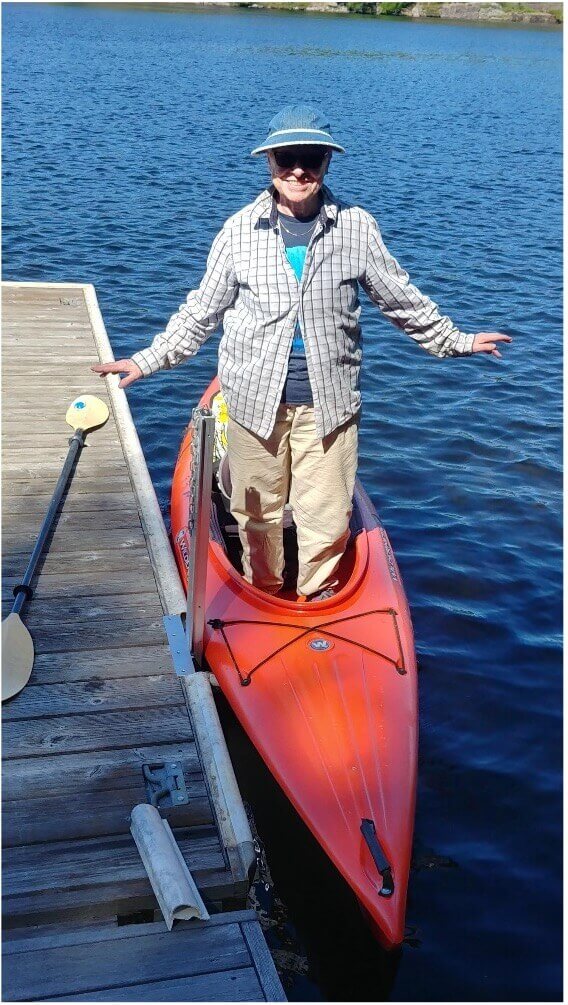
Kayaking Safety Tips
Before heading out on the water, it’s crucial to be mindful of kayaking safety. This includes checking the location and weather and having a safety plan in place.
Location and Weather Considerations
When choosing a location to kayak, one should consider current water and weather conditions. Closed waters like lakes are typically safer for novices, while open waters may pose challenges like rougher currents and weather changes. Updates on conditions can be obtained through a travel app or local weather forecasts. Furthermore, waterway conditions such as depth and tide schedules should be factored into the plans, especially if one aims to explore a new destination or enjoys fishing during their kayaking trip.
Itinerary and Safety Plans
Every paddler is recommended to plan their travel itinerary with emergency contacts and check-in points. Convey this itinerary to someone on shore so they know when to expect one’s return. Safety plans are crucial, especially for multi-day trips, where sudden changes in weather or unforeseen events can happen. For family trips or when venturing into nature, the use of POI ‘point of interest’ markers can add an additional layer of safety, allowing for a quick response in case of an emergency.
By following these straightforward safety measures, kayakers can enjoy their time on the water with peace of mind that they’re prepared for various situations.
Frequently Asked Questions
When embarking on a kayaking journey, whether solo or with a partner, knowing how to enhance your skills and navigate river waters can transform the experience. Here are some key points to help answer common queries.
What are some tips for a two-person kayak adventure?
In a two-person kayak, coordination is critical. Paddlers should work on syncing their strokes and communicating effectively to maneuver the kayak. The REI Expert Advice page suggests that the person in the back should follow the rhythm of the front paddler as they set the pace and direction.
How can I up my kayaking game and get better?
Improving at kayaking involves practice, learning advanced strokes, and understanding water conditions. It’s recommended to take lessons or seek guidance from experienced kayakers. For detailed kayaking techniques and advice, readers can explore resources like Watersports Whiz.
Can you share some essential river kayaking advice?
For river kayaking, safety is paramount. Wear a life jacket at all times and be aware of the river’s current and weather conditions before setting out. Mastery of edging and bracing techniques can help navigate rapids and prevent capsizing. The Kayak Base FAQ & Answers section addresses the importance of preparation and river knowledge.
